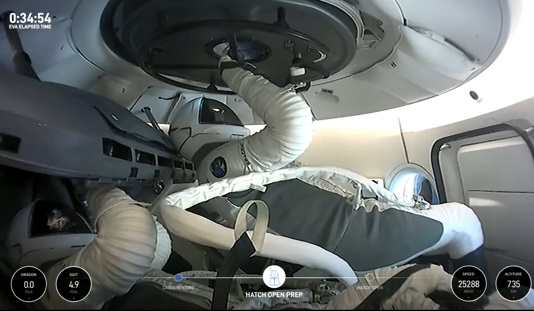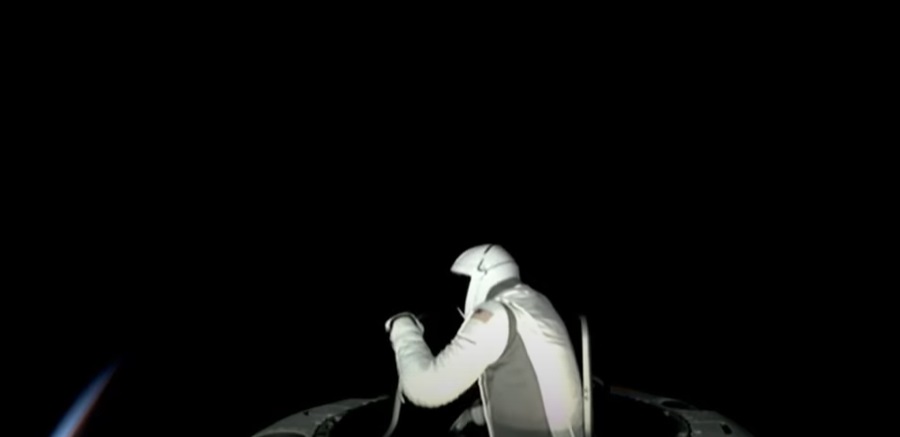The first commercially funded spacewalk mission, Polaris Dawn, was launched at 0923 GMT on 10 September by a Falcon 9v1.2 Block 5 rocket. The four private astronauts aboard the Crew Dragon capsule included the mission’s sponsor, billionaire businessman Jared Isaacman. The B1083 first stage, on its fourth flight, landed on the drone barge Just Read the Instructions located in the Atlantic.
Polaris Dawn was initially launched into a 1,200 x 195 km orbit at 51.7 degrees inclination relative to the equatorial plane. After an in-orbit boost, the apogee was raised to 1,400 km. This apogee was unusually high for a crewed flight to low Earth orbit (LEO) and, with the exception of Apollo, had not been seen since the days of NASA’s Gemini programme in the mid-1960s. As a comparison, the highest of the Gemini flights, Gemini 11, achieved an apogee of 1,374 km. While this was planned as part of radiation research, the apogee of the Crew Dragon’s orbit was later reduced to 700 km orbit. This was ahead of the first privately performed spacewalk.

Astronaut Isaacman opens the Crew Dragon hatch out to space. Courtesy: SpaceX
After a depressurisation exercise, the hatch was opened at 1049 GMT on 12 September. Using a special spacesuit designed for Extra Vehicular Activity (EVA), astronauts Isaacman and Sarah Gillis, a SpaceX engineer, took turns to hang out of the hatch holding a special rail. The rest of the crew, Anna Menon and Kidd Poteet, stayed in the capsule and conducted experiments. The whole crew wore umbilically connected space suits due to the lack of an airlock on the Dragon spacecraft, much like the Gemini missions. Once the hatch was open, all the crew were subject to a vacuum and so required protective pressure suits with an oxygen supply.
Isaacman was outside the hatch for 7 minutes 56 seconds and Gillis for around 7 minutes 15 seconds. The hatch was closed 26 minutes 40 seconds later at 1116 GMT.
Update on 20 September: The Crew Dragon capsule with all the crew aboard splashed down safely off the coast of Dry Tortugas, Florida shortly after 0737 GMT on 15 September.

Jared Isaacman goes out into space on first ever commercial spacewalk during Crew Dragon – Polaris Dawn mission. Courtesy: SpaceX







